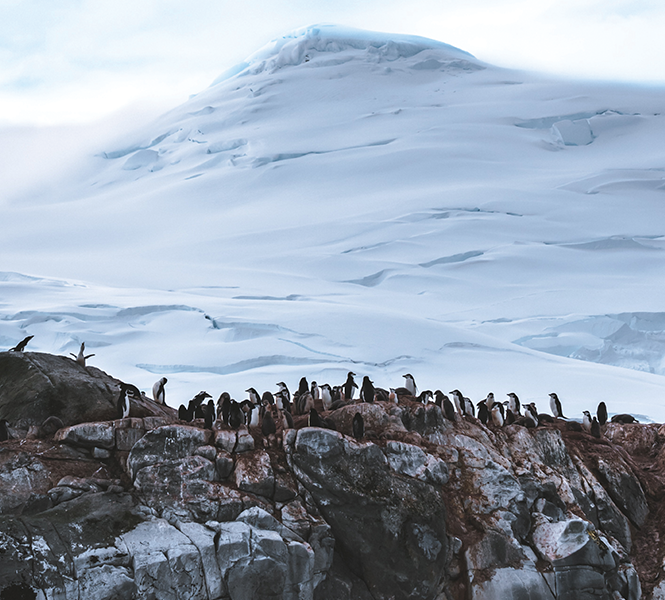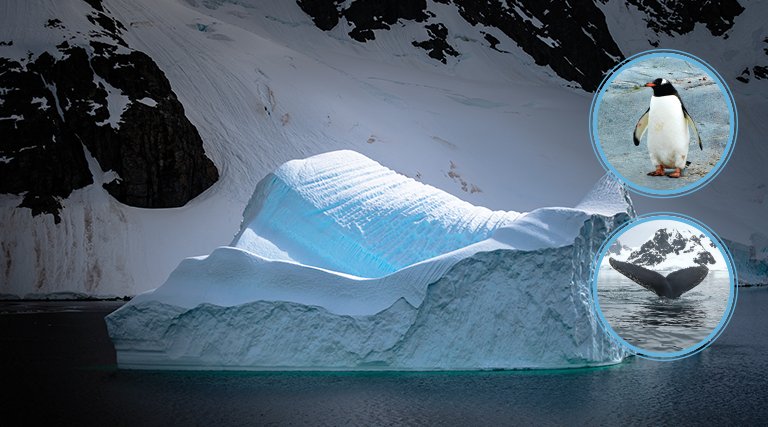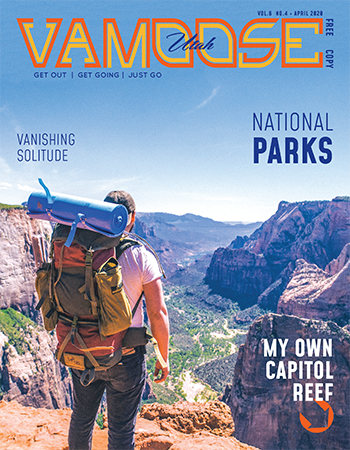Iceberg passageways reveal penguins, whales and awe-inspiring sunsets
By Chris Vanocur
It doesn’t get much better than being able to vamoose around Utah. The past few years have seen me vamoose from the Scenic Byway 12 in the south to the Golden Spike up north as well as many stops in-between. But sometimes popular Utah recreation spots such as the Mighty Five national parks can feel overcrowded and touristy, which is why I recently strayed (very) far from the beaten path.
My quest for someplace truly remote and unique took me south. Way south. As a matter of fact, about as far south as you can go.
Considering I really hate being cold, Antarctica might seem an unlikely destination. But the quiet, serenity and mysterious appeal of this frozen land called to me. I felt an inexplicable yet powerful urge to see icebergs, penguins, whales and, most importantly, as few people as possible. Sometimes, the best part of a trip is what’s not there.
Now, there are several ways to see Antarctica. If you want to actually step foot on the continent, then a small expedition ship is the way to go. They leave from Ushuaia, a chill little city at the very southern tip of Argentina. Upon arriving in Antarctica, you are then ferried to the shores in Kodiak boats. But be forewarned, these small Antarctica excursions can be pricey.
Another option is to travel aboard a larger cruise ship from either Buenos Aires, Argentina, or Santiago, Chile. On their journeys around the southern tip of South America, they spend several days doing a “drive-by” of Antarctica. While this type of trip can be more affordable, setting foot on Antarctica is not necessarily included in the base price.
I chose the cruise-ship option. Walking on Antarctica just wasn’t that big of a deal to me. Also, cruising around Cape Horn enabled me to see the breathtaking majesty of both Patagonia and the Chilean fjords.

Penguins huddle together to conserve warmth
Whichever way you go, and regardless of the expense and difficulty in reaching Antarctica, you will be rewarded with the sight of something truly miraculous. Words cannot adequately describe the astonishing beauty of this place. But the one word that kept coming back to me was “otherworldly.” The tranquility of the blue iceberg bays and the haunting mist of the snowcapped mountains floored me. On my second day there, I snapped more than 300 pictures. Just when you think nothing can be more spectacular than what you’ve just seen, you see something even more jaw-dropping.
On one of my last nights in Antarctica, just as I was getting ready for bed about 10:30 p.m., I happened to glance out my cabin window and was greeted by the sight of the sun setting over some Antarctic peaks. I grabbed my coat and camera and ran up to the starboard deck. Luckily, I was able to grab a dozen or so photos of this once-in-a-lifetime sight. Antarctica had surprised and stunned me one final time.
However, there is one more thing I should probably mention about sailing to Antarctica. To get there, you have to cross the Drake Passage. It’s the body of water between Ushuaia and Antarctica. It’s also where the Atlantic and the Pacific oceans collide in a violent and watery tussle. Because of this, the Drake Passage is often called the roughest stretch of water in the world.
The sea was relatively calm as our ship made its way south to Antarctica. When conditions are like this, it’s called the “Drake Lake.” But on the way back, we were racing to get ahead of approaching storms. This caused the wind and the waves to misbehave. When this kind of turbulence occurs, it’s called “The Drake Shake.” Without trying to scare anyone, the unpredictability of the Drake Passage (and Antarctica weather in general) is something to think about before embarking on this trip.
But, for me, it’s an inconvenience worth taking.
After all, who knows what Antarctica will look like in the future. Even this frozen tundra is not immune to climate change. Some fellow shipmates told me they had been to Antarctica just a decade or so before and remembered seeing significantly more ice. Anecdotal sure, but telling nonetheless.
Less ice also means it’s now easier for ships to get to Antarctica. In fact, as I write this, more boats are being built specifically with Antarctic cruising in mind. During the 2019-20 tourist season alone, more than 75,000 people were expected to visit this area during its “summer months” (roughly October through March). I strongly suspect and fear this number will soon increase exponentially.
So, if you’re thinking about vamoosing to this very cold place, you might want to go before it gets too hot. Both in terms of temperature and number of tourists.



